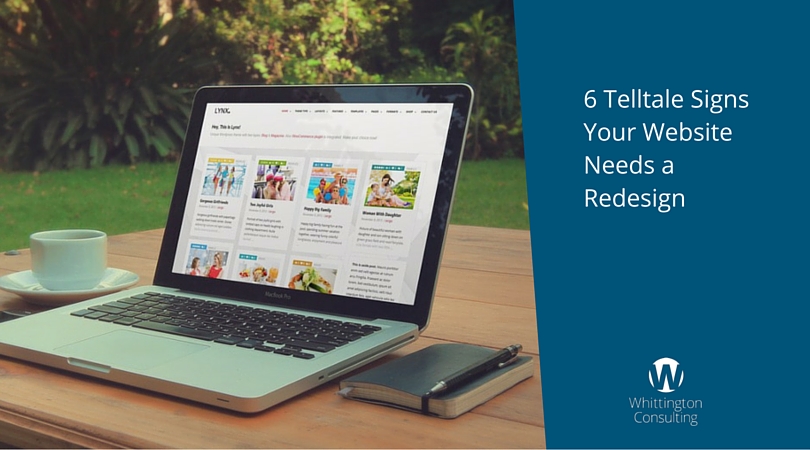 Your website acts as a 24/7 calling card for your business, a trusty communication tool and hopefully your company’s best “salesperson.” Dated design, poor content and a lousy layout damage your brand and cost you lost sales.
Your website acts as a 24/7 calling card for your business, a trusty communication tool and hopefully your company’s best “salesperson.” Dated design, poor content and a lousy layout damage your brand and cost you lost sales.
A redesign doesn’t have to mean overhauling your entire website; small tweaks, upgrades and improvements can make all the difference to the user experience.
These six telltale signs will let you know when it is time for at least a partial website redesign.
Not Optimized for Mobile
Four out of five people seek buying information on their smartphones, and mobile internet usage has now overtaken PC usage. If your website is not optimized for mobile, you are missing out on making your website easy to browse for a huge market of potential clients and customers. Mobile optimization includes responsive web design that allows components of your website to move around depending on the size of the smartphone or tablet screen.
Start today: Unsure if your company website is mobile friendly? Visit Google’s Mobile Friendly Test, enter your website address, and see if it passes the test.
Poor Navigation
Visitors want to be able to find what they are looking for in as few clicks as possible. If you’re receiving a lot of questions during your sales process that are answered on your website, it is a sign your navigation is not showing people relevant information when they need it.
Remember that good navigation isn’t just about having an easy-to-use menu bar that is consistent on all pages. Studying how people use your website will help you create “paths” that can reveal important sales information on your product or service at just the right time.
Start today: Head over to UserTesting.com and hire real people to try to accomplish tasks on your website, then watch the videos and see where they stumble.
High Bounce Rate
Your website analytics hold valuable performance information. Most bounce rates fall between 26 and 70 percent, with the average bounce rate being 45 percent. High bounce rates could mean that the homepage loads slowly, there are usability issues or the design doesn’t live up to the expectations the visitor has before they visit your site. A redesign will optimize pages to improve bounce rates and boost overall levels of customer satisfaction.
Most folks seem to think more links on a page are better, but simplifying the page and removing choices and distractions can actually help improve the user experience.
Start today: Look at your homepage bounce rate. If it’s higher than 50%, consider optimizing by re-writing some of the copy on the page to be more customer focused or removing some links so that people have a clear path to the information they need.
Too Much Company Speak
- “We’ve been in business since 1932.”
- “We specialize in complex solutions to your problems.”
- “Our team has over 30 years of experience.”
- “Unparalleled customer service.”
Chances are your company website has one or more of these meaningless phrases (or similar phrases). Not only do these distinctions sound exactly like your competitors, but they don’t speak to your potential customer’s needs.
If your homepage focuses more on your company than your customer, then it needs to be changed.
Low Conversion Rate
As we’ve said before, conversion rate (the percentage of people that become contacts after visiting your website) isn’t just for ecommerce companies. Manufacturing companies, specialty medical practices, and architecture, engineering and construction (AEC) firms (just to name a few) need to pay attention to their conversion rates.
If less than 1 in 100 people that visit the company website become a sales lead, then you need to fix your website.
No Opt-In Box
If your website is the calling card, the opt-in box is an invitation to the customer to start a relationship with your brand. Capturing email addresses and building a list is essential for any business. If your website is lacking an opt-in box, be it an online newsletter subscription box or a form to download an e-book or guide, you are losing valuable leads for your company.
If you have any of these big issues, a redesign should be on the top of your list. You don’t necessarily need to completely overhaul your entire website — consider an incremental approach. Putting money in your marketing budget to improve your website constantly will be a cost-effective move for your business.
This article was syndicated from Business 2 Community: 6 Telltale Signs Your Website Needs a Redesign
More Digital & Social articles from Business 2 Community:




